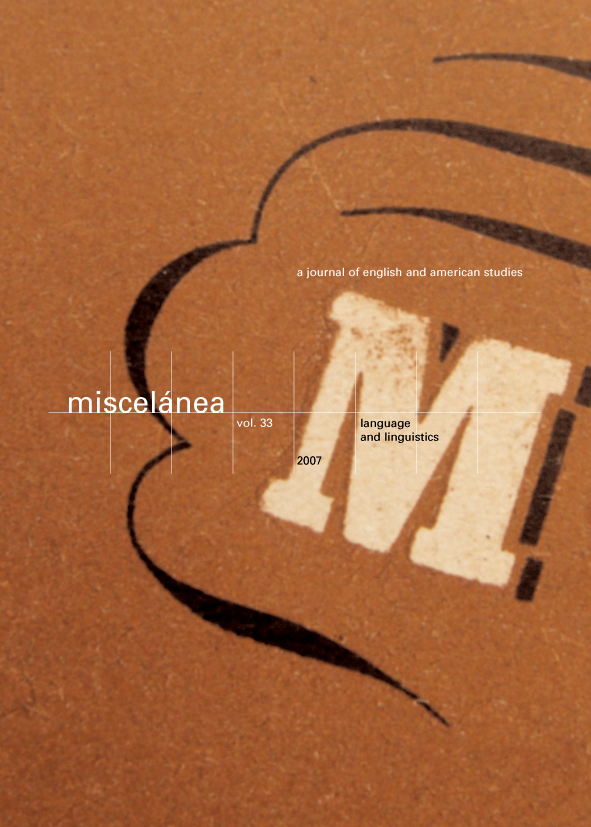Hypertextual Information Structures and their Influence on Reading Comprehension: An Empirical Study
DOI:
https://doi.org/10.26754/ojs_misc/mj.200610089Palabras clave:
estructuras informativas hipertextuales, comprensión lectora, velocidad de lectura, enseñanza de la lectura, diseño de páginas webResumen
El objetivo de este estudio empírico es evaluar las estructuras informativas en los hipertextos y su efecto en la comprensión lectora. La comparación del nivel de comprensión de las tres estructuras diferentes de hipertexto ofrece claves para el proceso de comprensión y tiene el potencial de informar acerca del diseño de sitios web. En la primera parte, el presente artículo trata de la estructura global de los hipertextos. En la segunda parte se establece una relación entre la navegación dentro del hipertexto y el marco teórico de la teoría de los esquemas. La tercera parte describe el estudio empírico, en el que se utilizan hipertextos lineales, axiales y dispuestos en red en una serie de pruebas centradas en la comprensión lectora. Se establece una correlación entre los resultados de la comprensión y la estructura textual y el tiempo de lectura. Los resultados indican que las estructuras axiales resultan más beneficiosas para la comprensión que el hipertexto dispuesto en red o linealmente y favorecen la comprensión y la memorización del contenido por parte de los lectores. La cuarta parte se centra en las implicaciones para la enseñanza de la lengua y perfila diversas actividades para activar los esquemas hipertextuales del estudiante. Por último, se hacen sugerencias para estudios posteriores y para el diseño de páginas web, así como la petición de exposiciones que combinen el registro del itinerario del usuario a través del documento con un mapa de los enlaces disponibles.
Descargas
Referencias
Aarseth, E. J. 1997. Perspectives on ergodic literature. Baltimore, London: The John Hopkins UP.
Balcytiene, A. 1999. “Exploring individual processes of knowledge construction with hypertext”. Instructional Science, 27: 303-328.
Brewer, W. 1987. “Schemas versus mental models in human memory”. In Morris, I. P. (ed.) Modelling Cognition. Chichester: John Wiley and Sons: 187-197.
Burbules, N. C. 1996. “Aporia and knowledge: passages of learning”. Educational Researcher, 24: 12-20.
Burbules, N. C. 1998. “Rhetorics of the Web: hyperreading and critical literacy”. In Snyder, I. (1998): 102-122.
Conklin, J. 1987. “Hypertext: an introduction and survey”. Computer. Vol. Sep.: 17-41.
Downs, R. M. and D. Stea. 1977. Maps in minds: Reflections on cognitive mapping. New York: Harper and Row.
Driscoll, M. 1994. Psychology of learning for instruction. Boston: Allyn and Bacon.
Elm, W. and D. Woods.1985. “Getting lost: A case study in interface design”. Proceedings of the Human Factors Society 29th annual meeting. Santa Monica, Ca: Human Factors Society: 927-931.
Engebretsen, M. 2000. “Hypernews and coherence”. Journal of Digital Information, Vol. 1/7: 209-225.
Gillingham, M. G. 1993. “Effects of question complexity and reader strategies on adults’ hypertext comprehension”. Journal of research on computing in education, 26: 1-15.
Guthrie, J. T. 1988. “Locating information in documents: examination of a cognitive model”. Reading Research Quarterly, 23: 178-199.
Halliday, M. A. K. and R. Hasan. 1989. Language, context, and text: aspects of language in a social-semiotic perspective. Oxford: Oxford University Press.
Hammond, N. and L. Allison. 1989. “Extending hypertext for learning: an investigation of access and guidance tools”. People and Computers, V. Cambridge: Cambridge University Press: 293-304.
Horney, M. 1993. “Case studies of navigational patterns in constructive hypertext”. Computers in Education, 20, 3: 257-270.
Hyland, K. 1999.”Talking to students: Metadiscourse in introductory coursebooks”. English for Specific Purposes, 18, 1: 3-26.
Kuhlen, R. 1991. Hypertext: ein nicht-lineares Medium zwischen Buch und Wissensbank. Berlin: Springer Verlag.
Lemke, J. L. 1998. “Metamedia literacy: Transforming meanings and media”. In: Reinking, D., M. McKenna, L. Labbo and R. D. Kieffer (eds). Handbook of literacy and technology: Transformations in a posttypographic world. Hillsdale, N.J.: Erlbaum: 283-301.
McKnight, C., A. Dillon and J. Richardson (eds.)1993. Hypertext: A psychological perspective. Chichester: Prentice Hall.
Salmeron, L. et al. 2005. “Reading strategies and hypertext comprehension”. Discourse processes, 40: 171-191.
Snyder, I. 1998. Page to screen. London. New York: Routledge.
Sperber, D. and D. Wilson. 1986. Relevance. Communication and cognition. Oxford: Blackwell.
Tolman, E. C. 1948. “Cognitive maps in rats and men”. Psychological Review, 55: 189-208.
Van Dijk, T. A. 1980. Macrostructures. Hillsdale, N.J.: Lawrence Erlbaum Associates.
Van Dijk, T.A. and W. Kintsch. 1983. Strategies of Discourse Comprehension. London: Academic Press.
Whalley, P. 1993. “An alternative rhetoric for hypertext”. In: McKnight, Dillon and Richardson (eds.) Hypertext: A psychological perspective. Chichester: Prentice Hall: 7-17.
Descargas
Publicado
Número
Sección
Licencia
Derechos de autor 2009 Margit Reitbauer

Esta obra está bajo una licencia internacional Creative Commons Atribución-NoComercial 4.0.


